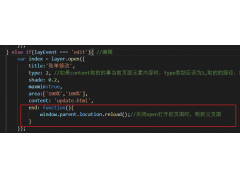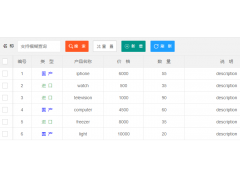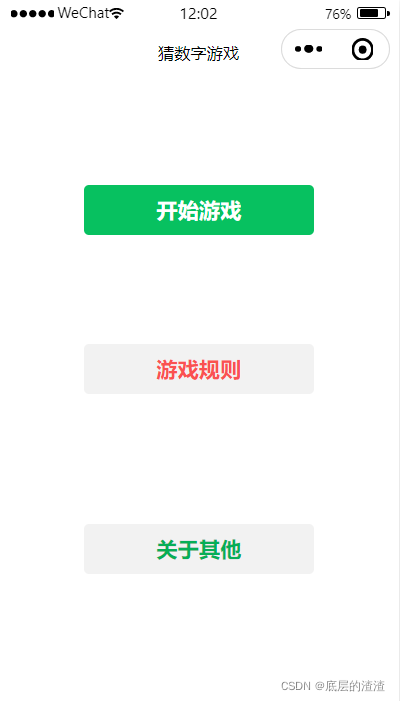Chart.js: evenly distribute ticks when using maxTicksLimit(Chart.js:使用 maxTicksLimit 时均匀分布刻度)
问题描述
我使用 Chart.js 版本 2.1.3 制作了折线图.
I made a line chart using Chart.js version 2.1.3.
var canvas = $('#gold_chart').get(0);
var ctx = canvas.getContext('2d');
var fillPatternGold = ctx.createLinearGradient(0, 0, 0, canvas.height);
fillPatternGold.addColorStop(0, '#fdca55');
fillPatternGold.addColorStop(1, '#ffffff');
var goldChart = new Chart(ctx, {
type: 'line',
animation: false,
data: {
labels: dates,
datasets: [{
label: '',
data: prices,
pointRadius: 0,
borderWidth: 1,
borderColor: '#a97f35',
backgroundColor: fillPatternGold
}]
},
title: {
position: 'bottom',
text: 'u7F8Eu5143 / u76CEu53F8'
},
options: {
legend: {
display: false
},
tooltips: {
callback: function(tooltipItem) {
return tooltipItem.yLabel;
}
},
scales: {
xAxes: [{
ticks: {
maxTicksLimit: 8
}
}]
}
}
});
输出如下:
如您所见,我通过 maxTicksLimit 将最大刻度数限制为 8.但是,分布并不均匀.如何让刻度分布均匀?
As you can see, I limited the maximum count of ticks to 8 via maxTicksLimit. However, the distribution is not even. How can I make the ticks distribute evenly?
附言数据集中始终有 289 条记录,每 5 分钟记录一次数据.prices 变量的示例值为:
p.s. there are always 289 records in the dataset, and the data is recorded every 5 minutes. Sample values of prices variable are:
[
{"14:10", 1280.3},
{"14:15", 1280.25},
{"14:20", 1282.85}
]
我尝试了不同的maxTicksLimit值,结果还是分布不均匀.
I tried different values of maxTicksLimit, and the results are still not distributed evenly.
推荐答案
Chart.js 使用积分 skipRatio(计算要跳过多少标签).使用 Chart.js v2.1.x,您可以编写自己的插件来使用小数 skipRatio
Chart.js uses an integral skipRatio (to figure out how many labels to skip). With Chart.js v2.1.x, you can write your own plugin to use a fractional skipRatio
预览
脚本
Chart.pluginService.register({
afterUpdate: function (chart) {
var xScale = chart.scales['x-axis-0'];
if (xScale.options.ticks.maxTicksLimit) {
// store the original maxTicksLimit
xScale.options.ticks._maxTicksLimit = xScale.options.ticks.maxTicksLimit;
// let chart.js draw the first and last label
xScale.options.ticks.maxTicksLimit = (xScale.ticks.length % xScale.options.ticks._maxTicksLimit === 0) ? 1 : 2;
var originalXScaleDraw = xScale.draw
xScale.draw = function () {
originalXScaleDraw.apply(this, arguments);
var xScale = chart.scales['x-axis-0'];
if (xScale.options.ticks.maxTicksLimit) {
var helpers = Chart.helpers;
var tickFontColor = helpers.getValueOrDefault(xScale.options.ticks.fontColor, Chart.defaults.global.defaultFontColor);
var tickFontSize = helpers.getValueOrDefault(xScale.options.ticks.fontSize, Chart.defaults.global.defaultFontSize);
var tickFontStyle = helpers.getValueOrDefault(xScale.options.ticks.fontStyle, Chart.defaults.global.defaultFontStyle);
var tickFontFamily = helpers.getValueOrDefault(xScale.options.ticks.fontFamily, Chart.defaults.global.defaultFontFamily);
var tickLabelFont = helpers.fontString(tickFontSize, tickFontStyle, tickFontFamily);
var tl = xScale.options.gridLines.tickMarkLength;
var isRotated = xScale.labelRotation !== 0;
var yTickStart = xScale.top;
var yTickEnd = xScale.top + tl;
var chartArea = chart.chartArea;
// use the saved ticks
var maxTicks = xScale.options.ticks._maxTicksLimit - 1;
var ticksPerVisibleTick = xScale.ticks.length / maxTicks;
// chart.js uses an integral skipRatio - this causes all the fractional ticks to be accounted for between the last 2 labels
// we use a fractional skipRatio
var ticksCovered = 0;
helpers.each(xScale.ticks, function (label, index) {
if (index < ticksCovered)
return;
ticksCovered += ticksPerVisibleTick;
// chart.js has already drawn these 2
if (index === 0 || index === (xScale.ticks.length - 1))
return;
// copy of chart.js code
var xLineValue = this.getPixelForTick(index);
var xLabelValue = this.getPixelForTick(index, this.options.gridLines.offsetGridLines);
if (this.options.gridLines.display) {
this.ctx.lineWidth = this.options.gridLines.lineWidth;
this.ctx.strokeStyle = this.options.gridLines.color;
xLineValue += helpers.aliasPixel(this.ctx.lineWidth);
// Draw the label area
this.ctx.beginPath();
if (this.options.gridLines.drawTicks) {
this.ctx.moveTo(xLineValue, yTickStart);
this.ctx.lineTo(xLineValue, yTickEnd);
}
// Draw the chart area
if (this.options.gridLines.drawOnChartArea) {
this.ctx.moveTo(xLineValue, chartArea.top);
this.ctx.lineTo(xLineValue, chartArea.bottom);
}
// Need to stroke in the loop because we are potentially changing line widths & colours
this.ctx.stroke();
}
if (this.options.ticks.display) {
this.ctx.save();
this.ctx.translate(xLabelValue + this.options.ticks.labelOffset, (isRotated) ? this.top + 12 : this.options.position === "top" ? this.bottom - tl : this.top + tl);
this.ctx.rotate(helpers.toRadians(this.labelRotation) * -1);
this.ctx.font = tickLabelFont;
this.ctx.textAlign = (isRotated) ? "right" : "center";
this.ctx.textBaseline = (isRotated) ? "middle" : this.options.position === "top" ? "bottom" : "top";
this.ctx.fillText(label, 0, 0);
this.ctx.restore();
}
}, xScale);
}
};
}
},
});
<小时>
小提琴 - http://jsfiddle.net/bh63pe1v/
这篇关于Chart.js:使用 maxTicksLimit 时均匀分布刻度的文章就介绍到这了,希望我们推荐的答案对大家有所帮助,也希望大家多多支持编程学习网!
本文标题为:Chart.js:使用 maxTicksLimit 时均匀分布刻度


基础教程推荐
- Javascript 在多个元素上单击事件侦听器并获取目标 2022-01-01
- 每次设置弹出窗口的焦点 2022-01-01
- 什么是不使用 jQuery 的经验技术原因? 2022-01-01
- 如何在特定日期之前获取消息? 2022-01-01
- Node.js 有没有好的索引/搜索引擎? 2022-01-01
- 为什么我在 Vue.js 中得到 ERR_CONNECTION_TIMED_OUT? 2022-01-01
- 如何使用 CSS 显示和隐藏 div? 2022-01-01
- jQuery File Upload - 如何识别所有文件何时上传 2022-01-01
- WatchKit 支持 html 吗?有没有像 UIWebview 这样的控制器? 2022-01-01
- 如何使用sencha Touch2在单页中显示列表和其他标签 2022-01-01

















